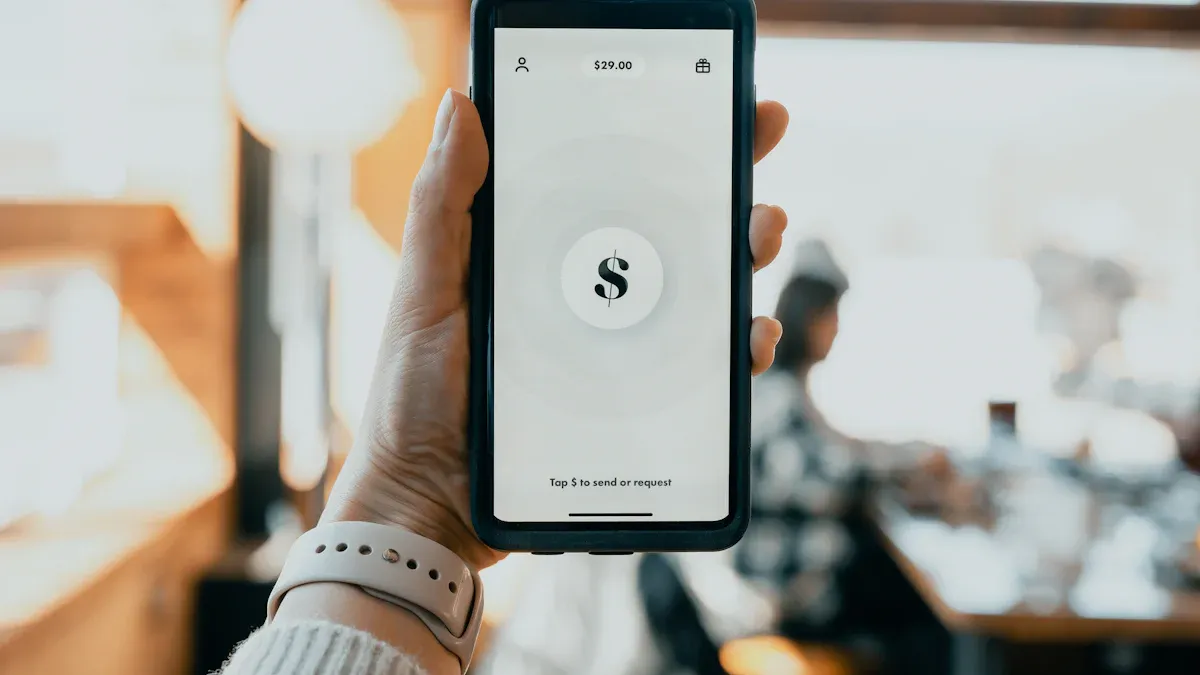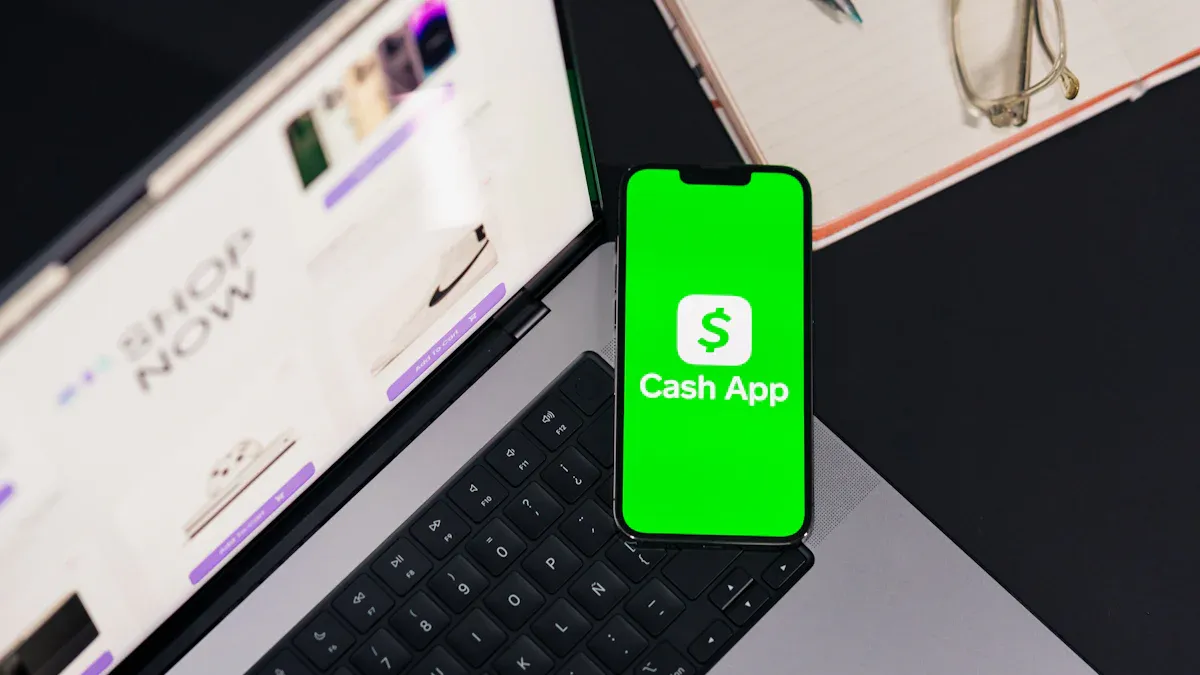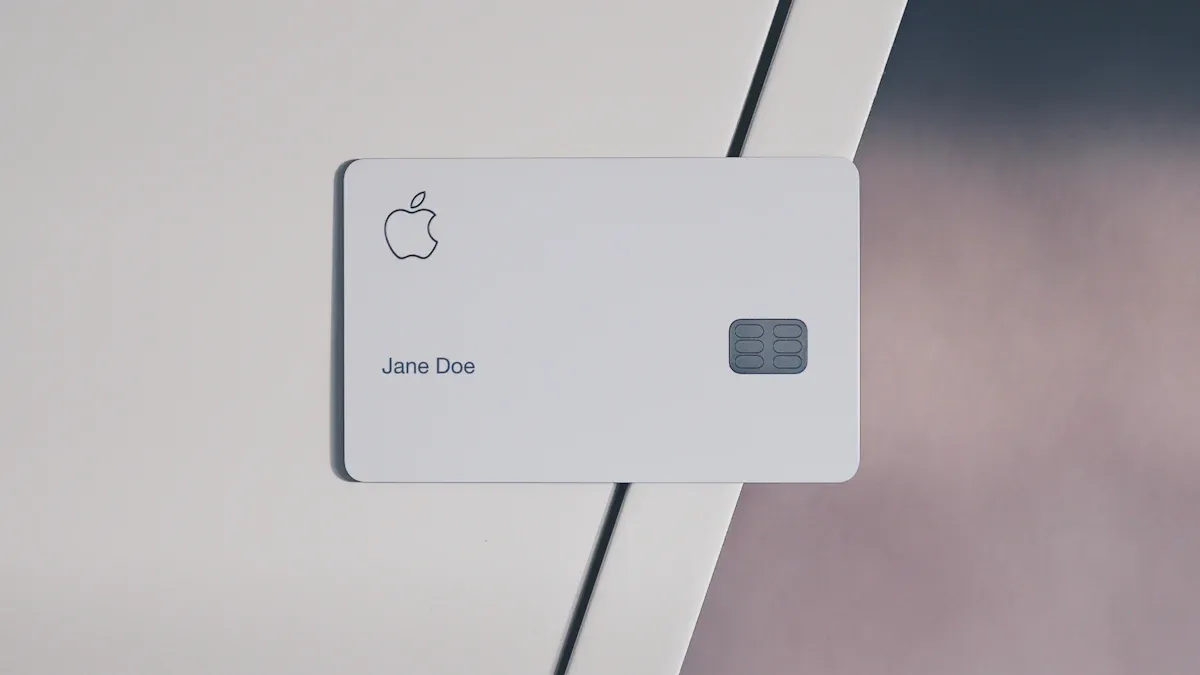- EasyCard
- Trade
- Help
- Announcement
- Academy
- SWIFT Code
- Iban Number
- Referral
- Customer Service
- Blog
- Creator
Apple Cash International Usage Guide: Transfer Process, Fees, and Considerations

Image Source: unsplash
You might be wondering how to use Apple Cash for international remittance. The answer is simple: you can’t do so directly. Apple Cash is currently limited to transfers between U.S. users.
Core Solution: While Apple Cash doesn’t work, you can indirectly achieve international transfers using Apple Pay. Simply link a bank card to Apple Pay and complete payments through third-party remittance apps like Wise or Remitly.
With the global digital remittance market expected to grow at over 15% annually, this method is becoming increasingly popular. This Apple Cash international usage guide will help you master this convenient transfer technique.
Key Points
- Apple Cash cannot be used directly for international transfers; it’s limited to U.S. use.
- You can use Apple Pay with a linked bank card through third-party apps like Wise or Remitly for international transfers.
- Before transferring, prepare identity verification documents and add a bank card to Apple Pay.
- When choosing a transfer service, compare rates, fees, and delivery speed to find the best platform for you.
- Apple Pay itself charges no international transfer fees, but third-party services charge fees and rate margins.
Core Features and Limitations of Apple Cash

Image Source: pexels
To understand why a workaround is needed, you first need to distinguish between Apple Cash and Apple Pay and understand their core limitations. This will help you use Apple’s payment ecosystem more effectively.
Apple Cash vs. Apple Pay
Many people confuse Apple Cash and Apple Pay. They are entirely different services. Apple Pay is a payment tool that lets you make secure payments with your phone. Apple Cash is more like a virtual prepaid card, primarily for peer-to-peer transfers.
You can quickly understand their core differences through the table below:
| Feature | Apple Cash | Apple Pay |
|---|---|---|
| Primary Use | Virtual card for peer-to-peer transfers and merchant purchases | Secure payment service for in-store and online merchant purchases |
| Funding Source | Rechargeable digital prepaid debit card account | Linked debit and credit cards |
| Operation Method | Acts like a digital prepaid debit card for sending/receiving funds | Uses cards added to a digital wallet for transactions |
| Nature | Virtual card with a cash balance | Tool for executing transactions |
Domestic Uses of Apple Cash
In the U.S., Apple Cash is highly powerful and convenient, handling various daily financial needs:
- Peer-to-Peer Transfers: Through the Messages app, you can easily send or receive money from friends, as simple as sending a text.
- Daily Purchases: Use your Apple Cash balance to pay at any store, website, or app accepting Apple Pay.
- Cashback Deposits: If you have an Apple Card, Daily Cash rewards are automatically deposited into your Apple Cash account.
Tip: You can also set up Apple Cash Family to give children pocket money and manage their spending.
Why Apple Cash Can’t Be Used for International Transfers
Apple Cash cannot be used directly for international transfers due to clear regulatory and technical reasons. Understanding these limitations is a key step in this Apple Cash international usage guide.
- Banking Partner Restrictions: Apple Cash services are provided by Green Dot Bank in the U.S.. The bank’s service agreement explicitly limits Apple Cash accounts and personal transfers to “U.S.-only use.”
- Financial Regulation Requirements: To comply with U.S. anti-money laundering (AML) regulations, users must verify identity with information like a Social Security Number (SSN), confining the service to the U.S. system.
- Technical Architecture: The service’s technology and currency system are built around USD and the U.S. banking system, lacking features for international currency conversion and cross-border settlement.
Thus, you cannot directly send funds from Apple Cash to friends in other countries.
Apple Cash International Usage Guide: Workaround Solution
Now that you understand Apple Cash’s limitations, let’s dive into the core solution: how to achieve international transfers using a workaround. The key is leveraging Apple Pay as a payment tool through third-party international transfer apps. This Apple Cash international usage guide will break down each step.
Pre-Transfer Preparations
Before starting, complete these simple preparations to ensure a smooth transfer process.
1. Add Your Bank Card to Apple Pay
First, ensure your debit or credit card is added to the iPhone’s Wallet app. If not, follow these steps:
- Open the Wallet app on your iPhone.
- Tap the plus (+) icon in the top-right corner.
- Select “Debit or Credit Card.”
- Tap “Continue,” then place your card in the camera frame to auto-capture details, or enter manually.
- Tap “Next” and input the card’s security code.
- Complete verification as prompted by your bank or card issuer.
Tip: You can also add a card to Apple Wallet directly through your card issuer’s app or website. This process is equally quick and easy.
2. Prepare Identity Verification Documents
All compliant international transfer services require identity verification to meet anti-money laundering (AML) regulations. Preparing these documents in advance saves time. You may need some or all of the following:
- Identity Information:
- Social Security Number (SSN) or Individual Taxpayer Identification Number (ITIN). This is a secure, one-time verification process.
- If you’re not a U.S. citizen, provide a non-U.S. ID.
- In some cases, if SSN verification fails, platforms may require a photo ID (e.g., driver’s license) and a selfie for comparison.
- Proof of Address Documents:
- Utility bill
- Bank or credit card statement
- Valid lease agreement
Step-by-Step Guide
With preparations complete, you can start transferring. We use the popular Wise service as an example to show how to use Apple Pay for international transfers.
Steps for Sending Money with Wise and Apple Pay:
- Open the Wise iOS app or website.
- Set up a transfer as usual, entering the amount and recipient details.
- On the Payment Method page, select “Apple Pay” as your payment option.
- Confirm, and your iPhone will display the Apple Pay interface, authorizing with Face ID or Touch ID.
Important Note: When using Apple Pay for international transfers, you must use a locally issued bank card. For example, if sending USD from the U.S., your Apple Pay must be linked to a U.S.-issued card.
Transfer Limits
Using Apple Pay with Wise has specific limits, varying by country or region. For transfers from the U.S., the limit is 2,000 USD daily and 8,000 USD weekly.
The table below lists Apple Pay payment limits for select countries/regions:
| Country/Region of Profile | Per Transaction Limit |
|---|---|
| United States | 2,000 USD daily, 8,000 USD weekly |
| United Kingdom | 10,000 GBP |
| Australia | 18,000 AUD |
| Switzerland | 3,500 CHF |
| Eurozone (e.g., France, Germany, Spain) | 10,000 EUR |
Choosing the Right Third-Party Service
Many international transfer services support Apple Pay, with Wise and Remitly being among the most popular. Choose the best platform based on your needs.
Key Criteria for Comparing Transfer Services:
- Rates and Fees: Does the platform use the mid-market rate or add a markup? Are fees transparent?
- Delivery Speed: How long until funds reach the recipient—minutes or days?
- Supported Countries and Currencies: Does the platform support your target country?
- Receiving Options: How can recipients receive funds, e.g., bank deposit, digital wallet, or cash pickup?
- Transaction Tracking: Can you track your transfer status in real-time?
Wise vs. Remitly: A Comparison Example
Let’s compare sending 1,000 USD from the U.S. to Mexico:
| Provider | Estimated Delivery Time | Exchange Rate | Transfer Fees | Recipient Receives (Sending 1,000 USD) |
|---|---|---|---|---|
| Wise | Within 7 hours | 18.4222 (mid-market rate) | 12.67 USD | 18,188.79 MXN |
| Remitly | 5-7 days | 18.1592 | 1.99 USD | 18,123.07 MXN |
From the table:
- Wise excels in transparency, using the mid-market rate with clear fees, resulting in more money received.
- Remitly has lower fees but includes a 0.5% to 3.0% rate markup. It may offer promotional rates for new users, but Wise is often more cost-effective long-term.
Your choice depends on prioritizing low visible fees or better actual rates. Weighing these factors is key to effectively using this Apple Cash international usage guide workaround.
Fees and Limits Analysis

Image Source: unsplash
Understanding fees and limits is critical for successful international transfers. This helps you choose the most cost-effective option and avoid unexpected delays. This section details all relevant fee components and limiting factors.
International Transfer Fee Structure
When transferring via third-party services, total costs go beyond visible service fees. Focus on these core components:
- Transfer Fee: The direct fee, either a fixed amount (e.g., 1.99 USD) or a percentage of the transfer amount.
- Exchange Rate Margin: The most common “hidden fee.” Many banks and services add a markup to the mid-market rate for profit. Even “zero-fee” services may hide costs in poor rates. Services like Wise emphasize using the unadjusted mid-market rate for transparency.
- Intermediary Bank Fees: In some cases, if funds pass through multiple bank networks, intermediaries may charge processing fees, typically 2 USD to 20 USD.
Apple Cash Fee Clarification
To avoid confusion, distinguish between Apple Pay and Apple Cash fees.
Firstly, when using Apple Pay as a payment method on third-party apps (e.g., Wise or Remitly), Apple itself charges no additional fees. All fees you see come from the transfer service provider.
Important Note: Apple Cash fees are unrelated. Only when funding your Apple Cash account with a credit card does Apple charge a 3% handling fee. This fee is separate from using Apple Pay for international transfers on third-party platforms.
Similarly, Apple Cash’s own transfer limits (e.g., up to 10,000 USD weekly for peer-to-peer transfers in the U.S.) apply only to its peer-to-peer function, not affecting third-party platform transfer limits.
Factors Determining Transfer Limits
Limits for international transfers are primarily determined by:
- Third-Party Platform Rules: Each transfer service (e.g., Wise, Remitly) has its own limits, varying by payment method and destination country.
- Identity Verification Level: All compliant platforms must follow anti-money laundering (AML) regulations. Your transfer limit is tied to your verification level.
- Basic Verification: Allows smaller amounts, e.g., 2,000 USD daily.
- Advanced Verification: Providing additional documents (e.g., proof of address, source of funds) increases single or daily limits.
Before large transfers, complete all required identity verification on the chosen app to ensure smooth transactions.
Transaction Security Measures
When transferring internationally, fund safety and process transparency are critical. Understanding transaction safeguards, tracking, and issue resolution builds confidence.
Transaction Security Measures
Transfers via Apple Pay on third-party apps benefit from dual-layer security.
The first layer comes from Apple Pay itself, designed with security and privacy in mind:
- Tokenization: Apple Pay doesn’t store or transmit your actual card number. It generates a unique device-specific number (token). Merchants receive only this token, protecting your card details.
- Biometric Authentication: Each payment requires authorization via Face ID or Touch ID, ensuring only you can complete transactions.
The second layer comes from transfer providers like Wise and Remitly, with robust security measures:
- Account Verification: They use strict processes to verify your identity, preventing fraud.
- Dedicated Teams: They have fraud prevention teams monitoring suspicious activity 24/7 to protect your account and funds.
Transfer Speed and Tracking
Transfer speed varies by factors, but you can track status in real-time. Most transfer apps like Wise offer live tracking. Check each step from sending to receipt in the app, with updates via email or push notifications.
Tip: Transfers may face delays due to:
- Incorrect Information: Errors in recipient details or bank account.
- Holidays and Weekends: Banks don’t process on non-business days.
- Time Zone Differences: Time differences between sending and receiving countries may affect processing.
- Compliance Checks: Large or unusual transactions may require extra review.
Transaction Cancellation and Dispute Resolution
To cancel a transfer, act immediately. U.S. federal law typically allows free cancellation within 30 minutes of payment, but this isn’t guaranteed.
Key Point: Funds must not yet be collected or deposited into the recipient’s account.
Once funds are delivered, transactions are irreversible. If you suspect errors or fraud, contact the transfer provider’s (e.g., Wise or Remitly) customer service immediately. They’ll guide you through appeals or dispute resolution.
This Apple Cash international usage guide makes it clear: you can’t use Apple Cash directly for international transfers. Shift your perspective to see Apple Pay as a powerful payment tool that securely connects to third-party transfer services.
Ultimately, your choice depends on priorities:
- Speed: Choose digital services like Wise or Remitly for faster delivery.
- Cost Savings: Compare fees and rates for the most cost-effective option.
Choose a provider wisely based on your needs to maximize this workaround’s benefits.
FAQ
Can I send money directly with my Apple Cash balance?
No. You cannot use your Apple Cash balance directly for international transfers. You must use Apple Pay with a linked bank card on a third-party app to complete the payment.
Does Apple Pay charge fees for international transfers?
No. Apple Pay itself charges no fees. All fees, such as transfer fees, come from the third-party transfer service (e.g., Wise or Remitly).
Why did my Apple Pay payment fail?
Payment failures often stem from several causes. Your bank card may not support such transactions, or you’ve reached the daily limit set by the transfer platform or bank. Contact your bank first to confirm.
Can I use this method to send money to mainland China?
Yes, as long as the third-party transfer service supports sending to mainland China, you can use Apple Pay to complete the payment. Confirm the service supports your recipient’s receipt method before transferring.
*This article is provided for general information purposes and does not constitute legal, tax or other professional advice from BiyaPay or its subsidiaries and its affiliates, and it is not intended as a substitute for obtaining advice from a financial advisor or any other professional.
We make no representations, warranties or warranties, express or implied, as to the accuracy, completeness or timeliness of the contents of this publication.




Contact Us
Company and Team
BiyaPay Products
Customer Services
is a broker-dealer registered with the U.S. Securities and Exchange Commission (SEC) (No.: 802-127417), member of the Financial Industry Regulatory Authority (FINRA) (CRD: 325027), member of the Securities Investor Protection Corporation (SIPC), and regulated by FINRA and SEC.
registered with the US Financial Crimes Enforcement Network (FinCEN), as a Money Services Business (MSB), registration number: 31000218637349, and regulated by FinCEN.
registered as Financial Service Provider (FSP number: FSP1007221) in New Zealand, and is a member of the Financial Dispute Resolution Scheme, a New Zealand independent dispute resolution service provider.




















